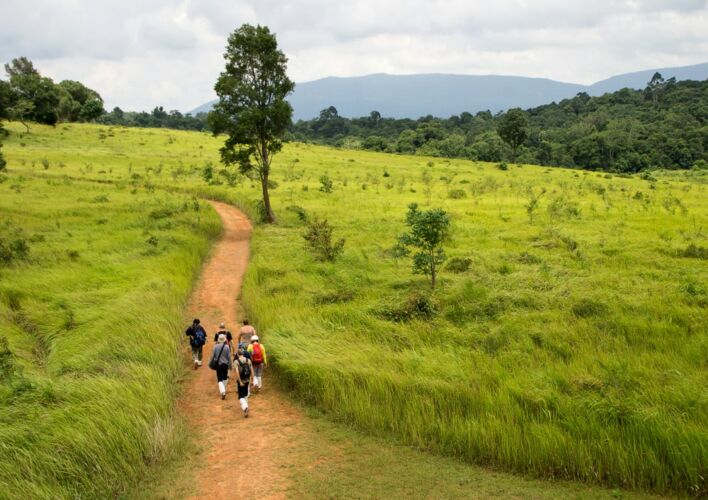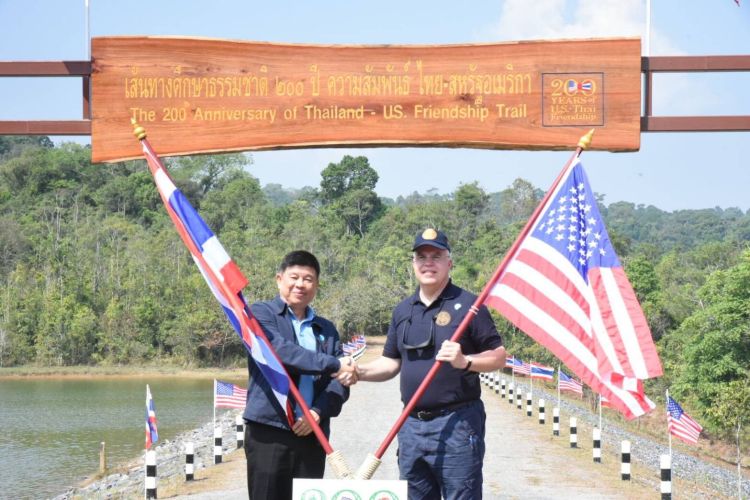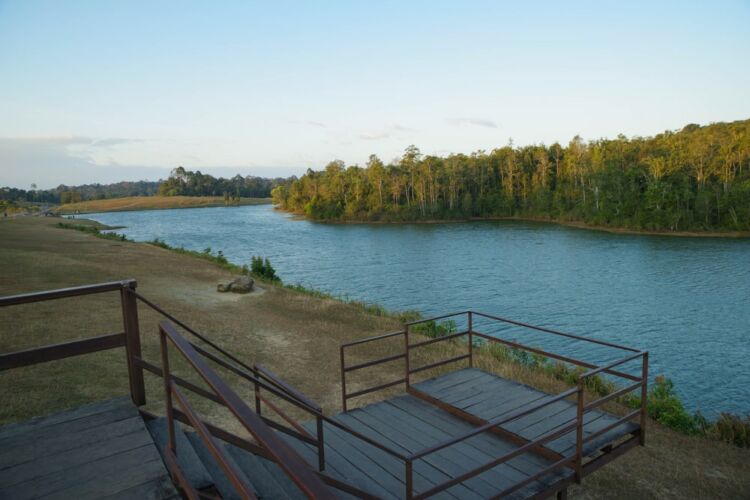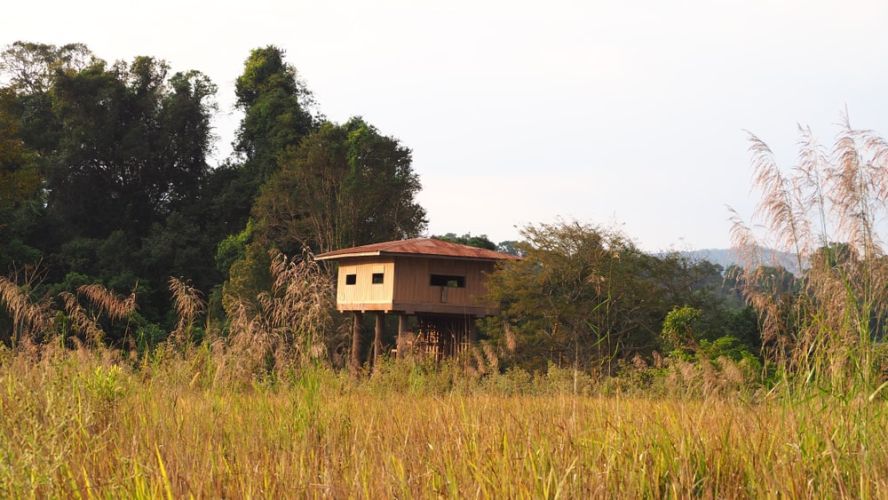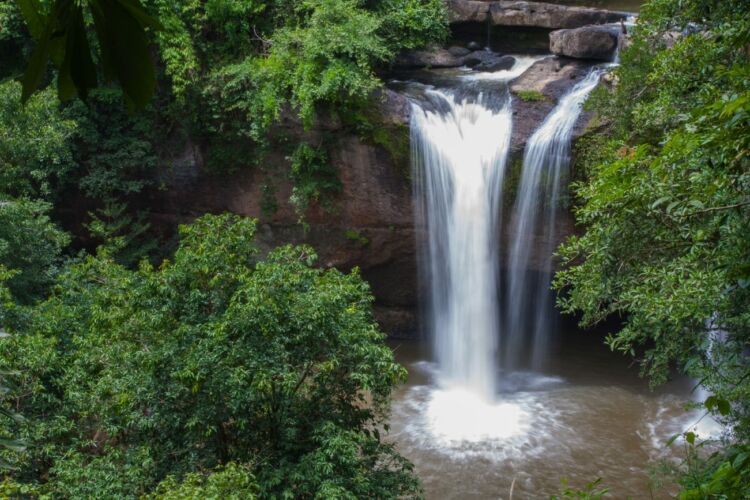Animal, the docuseries from Netflix, has inspired many nature lovers to head off down nature trails for the chance to observe the fascinating livelihoods of wild animals up close. Presented in Season 2 of Animal, Khao Yai is Thailand’s first national park. The rich forest of Khao Yai is perfect for short trekking, with 7 well-established nature trails to explore throughout the year. Only the trail from the visitor office to Haew Suwat Waterfall is closed between 1 July – 31 August every year.
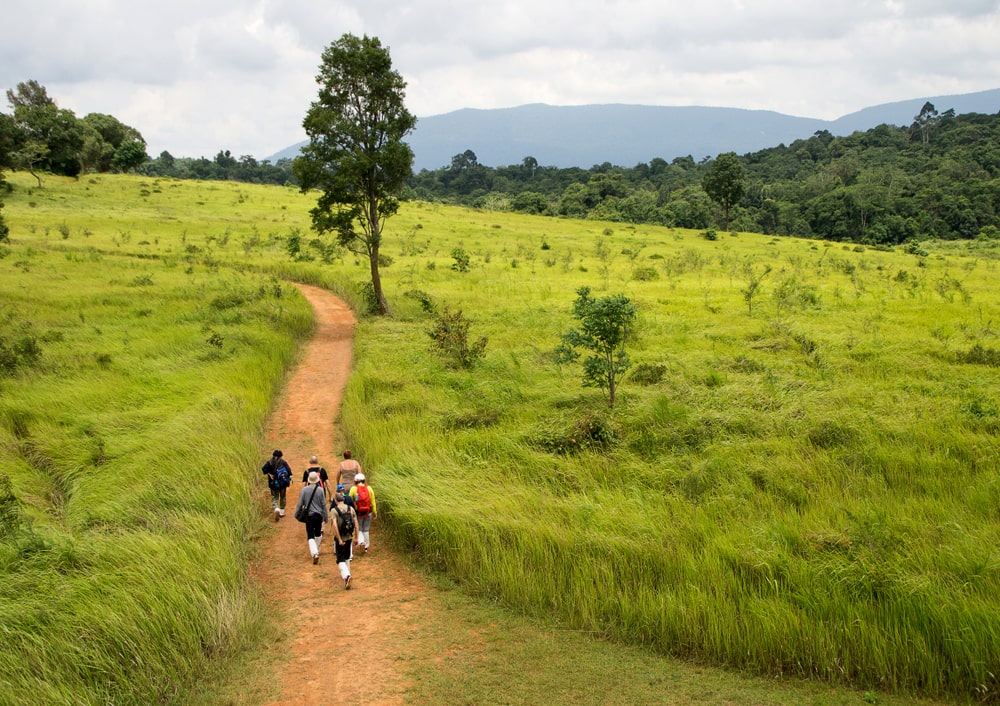
(1.2 kilometers)
This is the shortest and most convenient trail in the park. The flora alternates between moist evergreen forest and dry evergreen forest as you make your way to the Kong Kaew waterfall, which was formed from volcanic rocks and a freshwater swamp forest. All along the trail, you’ll find valuable agarwood trees and wild animals such as the Lar gibbon, pileated gibbon, and countless species of birds.
Time: 45 minutes (no guide required)
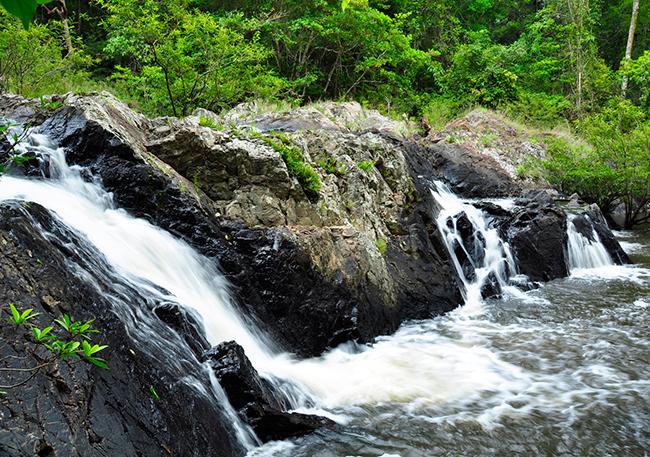
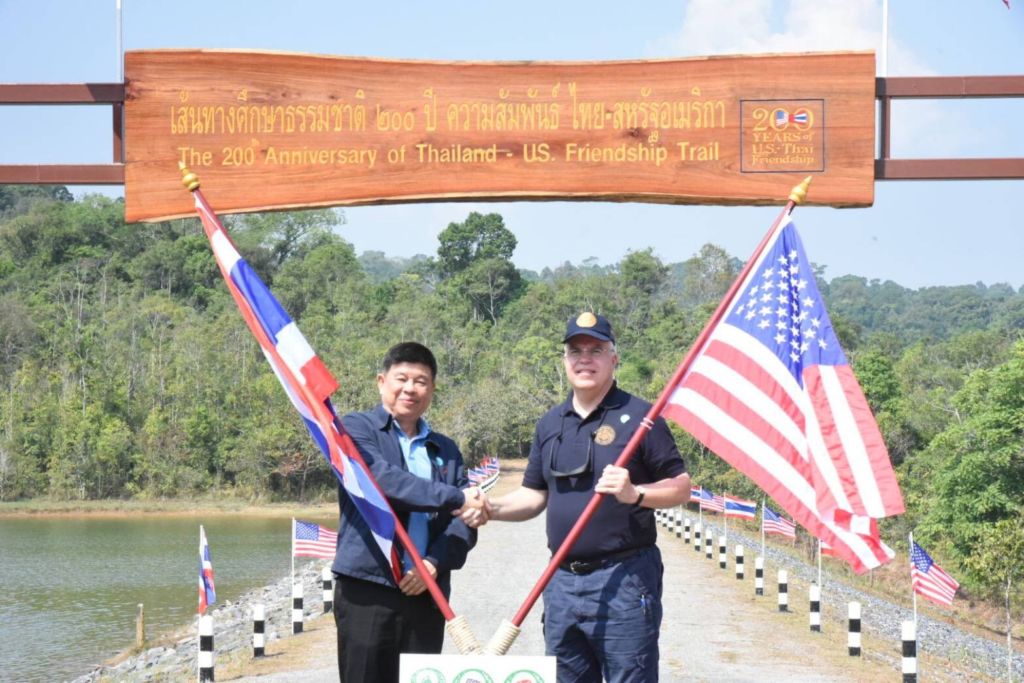
(2 kilometers)
This is the newest trail in the park. It starts from the ridge of Sai Sorn reservoir and passes through different ecological forest zones, including dry evergreen forest, secondary forest (second-growth forest), and grassland. Frequently encountered wildlife include the Siamese firebacks, silver pheasants, gibbons, and hornbills.
Time: 1.5 hours (no guide required)
(2.7 kilometers)
This trail leads to Sai Sorn reservoir, where the sunset scene is spectacular. Along the route, you will pass through dry evergreen forest and the secondary forest where the highlights are gibbons and a giant Baing tree which is hundreds of years old. In the rainy season, you can find various species of flowers, such as hairy ball, Begonia, and Paraboea harroviana.
Time: 1 hour 50 minutes–2 hours with a mandated guide
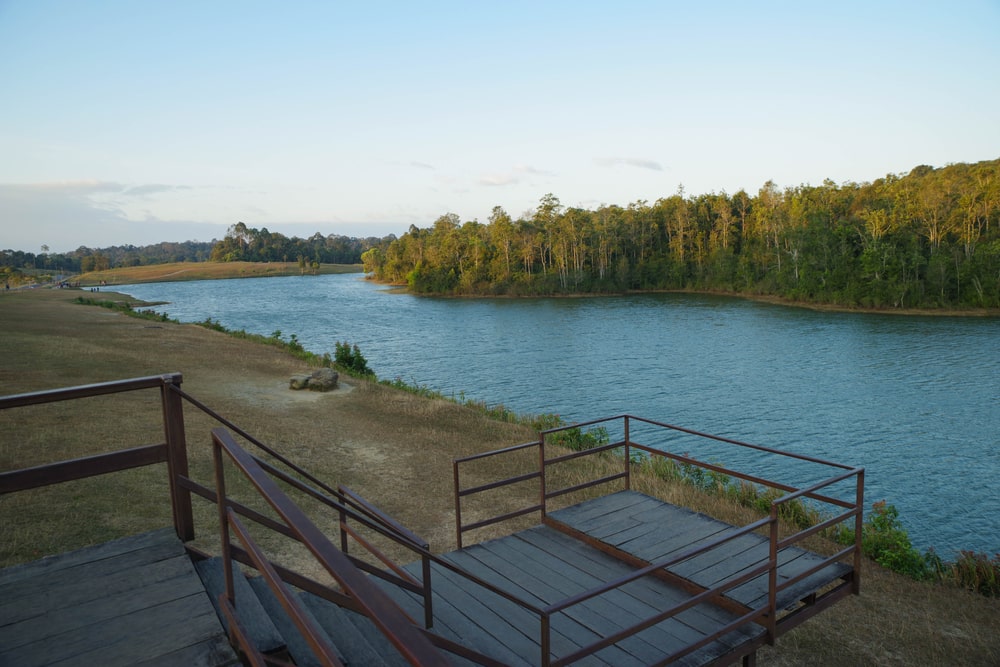
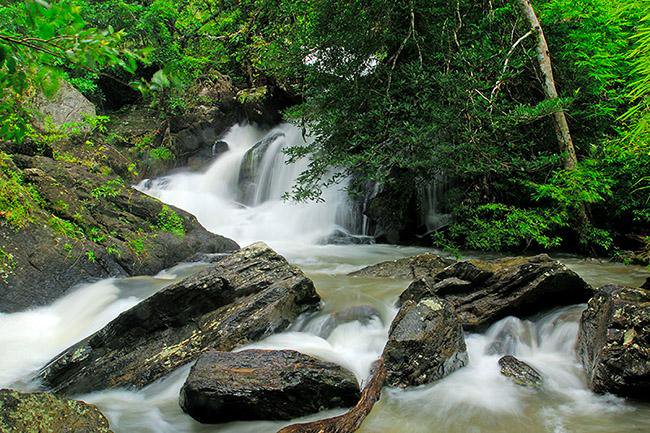
(3 kilometers)
This nature trail connects two waterfalls. As you walk along Lam Ta Khong stream, the forest backdrop alternates between bamboo forest, moist evergreen forest, and dry evergreen forest. In the dry season (November–April), you can see the traces of lava flows from a volcano that erupted hundreds of millions of years ago and the Polypleurum flowers as they emerge from underwater.
Time: 2 hours (no guide required)
(3.3 kilometers)
With its mix of open grassland and the shade of various forest types, this nature trail attracts a wide variety of birds and different animal species. The giant basil trees that thrive here can only be found in the Dong Phaya Yen forest, and elephants and gaurs like to spend the day in their shade. If you come to Nong Phak Chi Observation Tower in the dry season, you will see elephants, gaurs, gibbons, and hornbills near the water sources and salt licks in the grass.
Time: 2.5-3 hours with a mandated guide
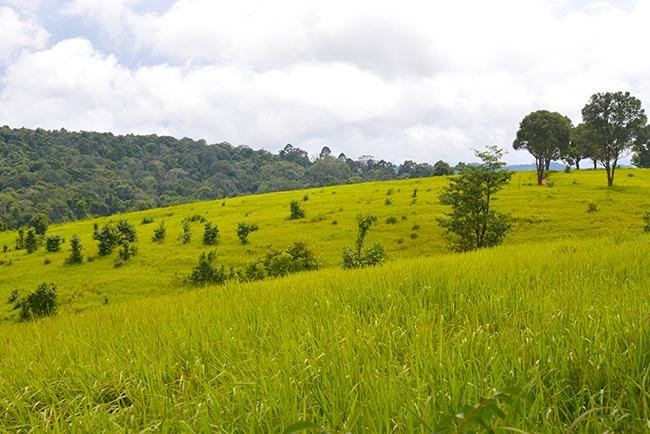
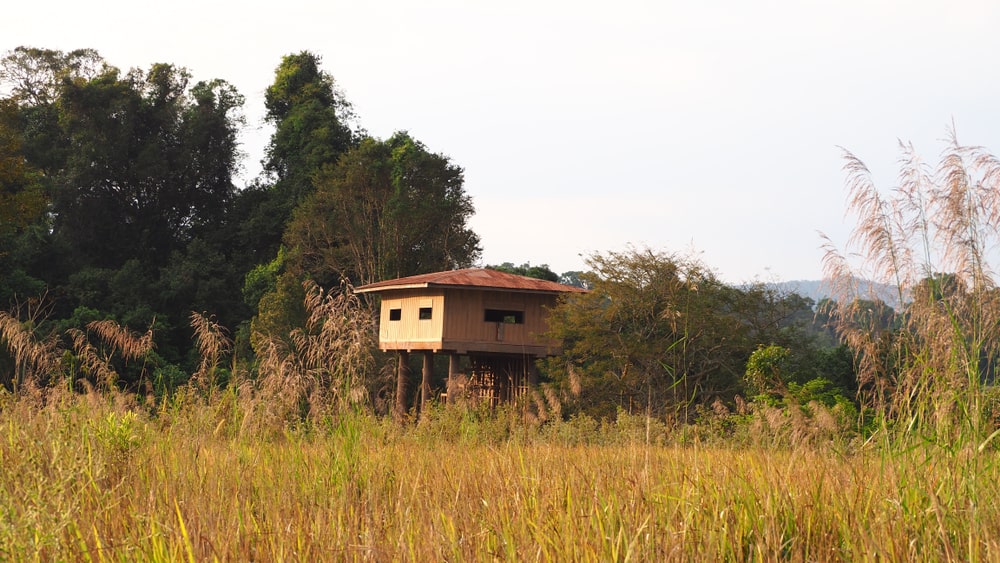
(5 kilometers)
This nature trail runs along a flat basin alternating up and down steep slopes leading to Nong Phak Chi Observation Tower. This is the foraging ground of several wild animals, including elephants, bears, hornbills, and gibbons. The giant Baing tree is the highlight of this trail. If you come in the rainy season, you will see wild mushrooms of various colors and shapes.
Time: 3 hours with a mandated guide
(8 kilometers)
This is the longest and most challenging natural trail, but it rewards ardent trekkers with its abundance of wild animals, such as elephants, Asian black bears, hornbills, and gibbons. The trail passes through rainforest alternating with bamboo forest, where valuable plants such as rosewood, scented agarwood, and dense thickets of large ferns thrive.
Time: 6 hours with a mandated guide
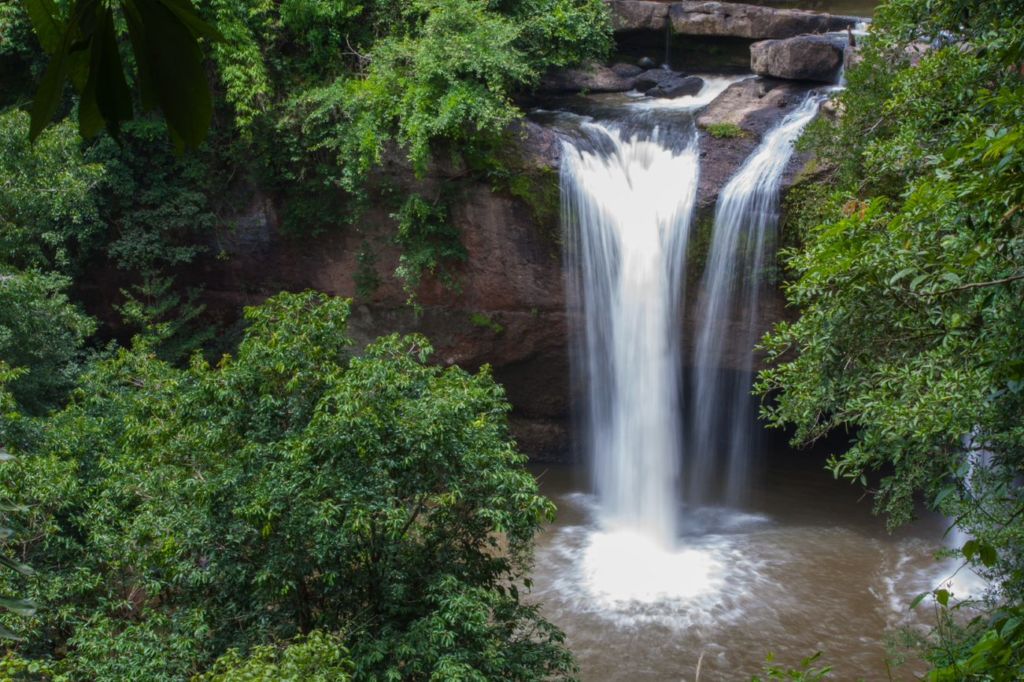
From Bangkok, take Phaholyothin Road, passing Rangsit and Saraburi before turning right into Mittraphap. From here, continue past Muak Lek and then turn right again at Pak Chong intersection (KM.58) into highway 2090 (Thanarat Road) and drive for another 20 kilometers to the entrance of the national park. It’s open daily from 6.00 am-6.00 pm. Contact the visitor center for more information (8.30 am-4.30 pm) at 08 6092 6529.
Please visit this website for more details about these 7 natural trails.

